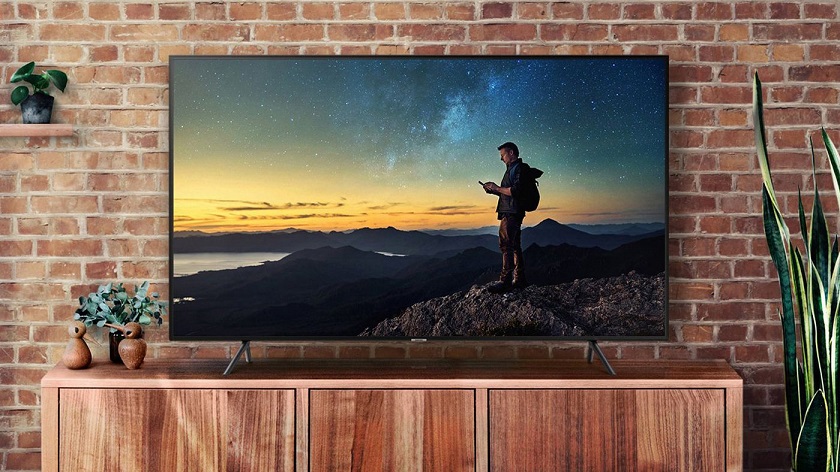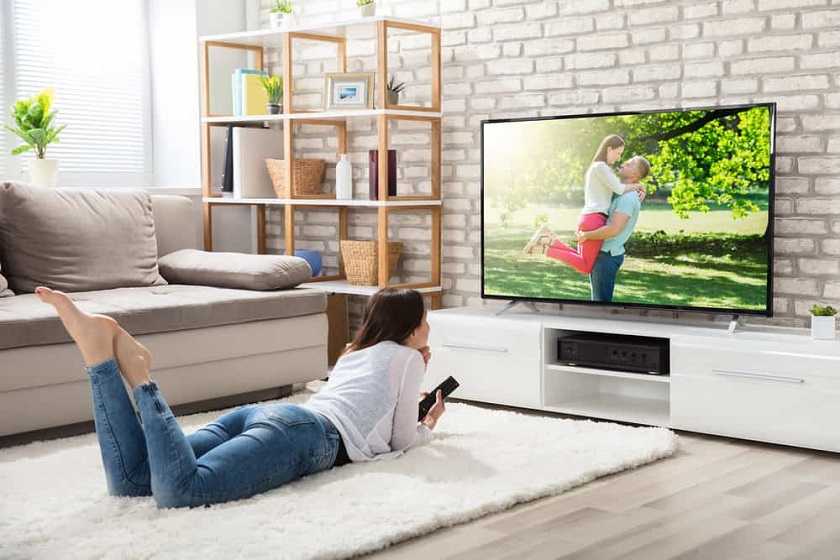The word “smart” is getting thrown around with TVs these days, and its meaning seems to be constantly changing. For most, however, it means that the TV is capable of connecting to your smartphone or computer, as well as the internet. When shopping for a smart TV, make sure you only consider the best brands, as the smarts in the cheaper brands aren’t so smart. The OS from well-known brands is typically faster, provides more options, and is easier to use.
Generally, smart TVs can:
- Stream media from your phone or computer to the TV
- Connect wirelessly and use apps like Netflix, Stan, ABC iView and more
- Apply security and system updates to improve performance and features
- But there are more things to consider besides the brand of the TV.
The Biggest Factor – Size

For most people, the biggest factor is the screen size, no matter whether they’re looking for a high-performance or basic TV. The first thing that will help you make the right decision is figuring out where to place the TV and how many people will generally watch at the same time. If your budget allows it, you should pick the largest one you can fit in that space. The sweet spot today for most people is between 55 and 65 inches.
However, the ideal screen size also depends on how close you sit to the TV. If you can count the pixels on it, you’re too close. Ideally, you should be three times the distance of the screen height for HD and at least 1.5 times the screen height for 4K. In other words, you can sit twice as close to 4K TVs.
But at the end of the day, no guide should replace your judgement and preferences. If possible, go to the store and look at all the different TVs. Buying a smart TV 32 inch model will be better suited for a tight space, yet you may have thought that a 43-inch one would fit perfectly fine.
Screen Resolution

The screen resolution describes the number of pixels that make up the picture. More pixels mean finer details, so the more pixels, the merrier. For many years, full HD (1920×1080) was the standard. However, manufacturers are rapidly changing to Ultra HD (4k). These models have 4 times the number of pixels (3840×2160). The biggest advantage of 4K screen resolution is that smaller objects on the screen are more detailed. As a result, the image appears teacher and more lively. This, in turn, allows you to comfortably look at the TV from a shorter distance.
Most streaming services, including Netflix, YouTube and Amazon Video have started providing 4k streaming content. Ultra HD Blu-ray discs are also becoming quite popular, and most big-name releases are in 4K. While Live TV hasn’t shifted to 4K yet, DirectTV, Comcast Xfinity and Dish Network all air 4K movies.
HDMI and Other Connections

This is something to which a lot of buyers don’t pay mind. Manufacturers are trying to lower the costs of their products, by cutting the number of plugs available on the back. However, if you have a soundbar, a game console or a Chromecast, the ports can get filled rather quickly. If you’ve decided to get a high-end TV, make sure it supports HDMI 2.0 cables to accommodate Ultra HD sources.
The biggest improvement in the past few years is the VRR support, which matches the frame rate of AMD’s FreeSync and Nvidia’s G-Sync technologies. This allows the TV to match the frame rates of the content source, i.e. the graphics of the PC or game console, providing no screen tearing and smoother action, on top of higher frame rates and richer HDR data.
Moreover, this will allow for better adjustments at the scene level, providing precise backlight control, eARC support to boot, as well as the best form of Dolby Atmos sound formats to go through to compatible AV receivers and soundbars.
Word of Advice

Here are some quick tips to keep in mind when looking:
- Don’t go for a TV with less than 4K reso. Avoid 1080p or full HD models, unless you want a small smart tv 32 inch model or so as your 3rd or 4th TV.
- You don’t need an 8K TV for now, as they’re super expensive and there aren’t shows and movies in 8K…yet.
- Expect to pay a few hundred bucks for a quality 50-inch 4k TV. Models with next-gen features, better pictures and speakers cost more.
- Look for a TV with 120Hz or at least a 60Hz refresh rate. A higher refresh rate means smoother motion for movies, shows, gaming and sports.
- Get a TV with an HDR-compatible set, as it provides better contrast and more realistic colours. Ideally, consider a TV that supports HDR10+ or Dolby Vision.
- Get a TV with at least 4 HDMI ports.
- Avoid extended warranties.











